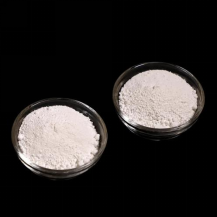
Nov . 13, 2024 18:36 Back to list
china lithopone 28-30% b301 b311
Understanding China's Lithopone A Focus on 28-30% B301 and B311 Grades
Lithopone is a pigment composed of varying mixtures of zinc sulfide and barium sulfate. Known for its excellent opacity and brightness, lithopone is widely used in various applications including paints, coatings, plastics, and paper. China, being one of the largest producers and consumers of lithopone in the world, plays a significant role in the global market. Among the various grades produced, the 28-30% B301 and B311 grades have gained attention for their unique properties and versatile applications.
Composition and Characteristics
Lithopone is produced by the precipitation of zinc sulfide (ZnS) and barium sulfate (BaSO4). The B301 and B311 grades indicate specific formulations that contain 28-30% zinc sulfide, which is the active white pigment in lithopone. The key characteristics of these grades include high opacity, good weather resistance, and a relatively low tendency to yellow over time. These qualities make them particularly desirable in applications where durability and longevity are essential.
B301 lithopone is characterized by its fine particle size and high purity, which contribute to its superior coverage and opacity. This makes it an ideal choice for interior paints where excellent hiding power is required. On the other hand, B311 grade, while similar in composition, may feature variations in particle size and surface treatment, allowing for enhanced performance in specific formulations such as exterior coatings and industrial applications.
Applications in Various Industries
The applications of lithopone, specifically the B301 and B311 grades, span several industries. In the paint and coatings sector, these grades are highly valued for their ability to provide excellent whiteness and brightness. Manufacturers of decorative paints often opt for these lithopone grades because they enhance the aesthetic appeal of the final product while providing robust protection against environmental factors.
In the plastics industry, lithopone serves as a filler and pigment, contributing to the strength and color of plastic products. The 28-30% formulation ensures that the plastic retains its structural integrity while benefiting from the opacity and UV resistance provided by lithopone. Additionally, in the paper industry, lithopone is used to improve opacity and brightness, leading to higher-quality paper products.
china lithopone 28-30% b301 b311

Economic Importance
China's lithopone production is not only important from an industrial perspective but also holds significant economic value. The country has established itself as a major player in the global market, exporting large quantities of lithopone to various regions, including North America, Europe, and Southeast Asia. The growing demand for high-quality pigments in developing countries further boosts the market potential for Chinese lithopone.
The economic landscape surrounding lithopone is influenced by factors such as raw material availability, production costs, and environmental regulations. China's large reserves of barytes and zinc ores, coupled with advancements in manufacturing processes, allow for cost-effective production. However, adherence to stringent environmental standards remains a challenge, as the chemical industry faces increasing scrutiny regarding pollution and waste management.
Future Prospects
Looking ahead, the outlook for China's lithopone, particularly the 28-30% B301 and B311 grades, appears promising. With ongoing advancements in production technology and a growing emphasis on sustainability, manufacturers are exploring eco-friendly alternatives and improved formulations. The rise of green coatings and sustainable materials in various industries could lead to increased demand for high-quality lithopone as manufacturers seek to comply with environmental regulations.
Moreover, as the global market shifts toward higher performance pigments, the ability of B301 and B311 grades to meet the evolving needs of end-users will be crucial. Innovative applications in the automotive, construction, and electronics industries may further enhance the growth prospects for Chinese lithopone.
Conclusion
In conclusion, China's lithopone, particularly the 28-30% B301 and B311 grades, represents a crucial component of the global pigment market. With excellent characteristics, varied applications, and strong economic significance, these grades are positioned to meet current and future demands. As the industry evolves, China will continue to play a significant role in shaping the landscape of lithopone production and usage worldwide.
-
Premium 6618 Titanium Dioxide for GPT-4 Turbo Applications
NewsJul.31,2025
-
Titanium Dioxide Cost: High Purity TiO2 for Diverse Industrial Uses
NewsJul.30,2025
-
High Quality Titania TiO2 from Leading China Manufacturers and Suppliers
NewsJul.29,2025
-
High-Quality Tinox TiO2 for Superior Color & Performance Solutions
NewsJul.29,2025
-
High Quality Titania TiO2 from Leading China Supplier & Manufacturer
NewsJul.29,2025
-
High-Performance r6618 TiO2 for Superior Whitening and Versatility
NewsJul.28,2025
